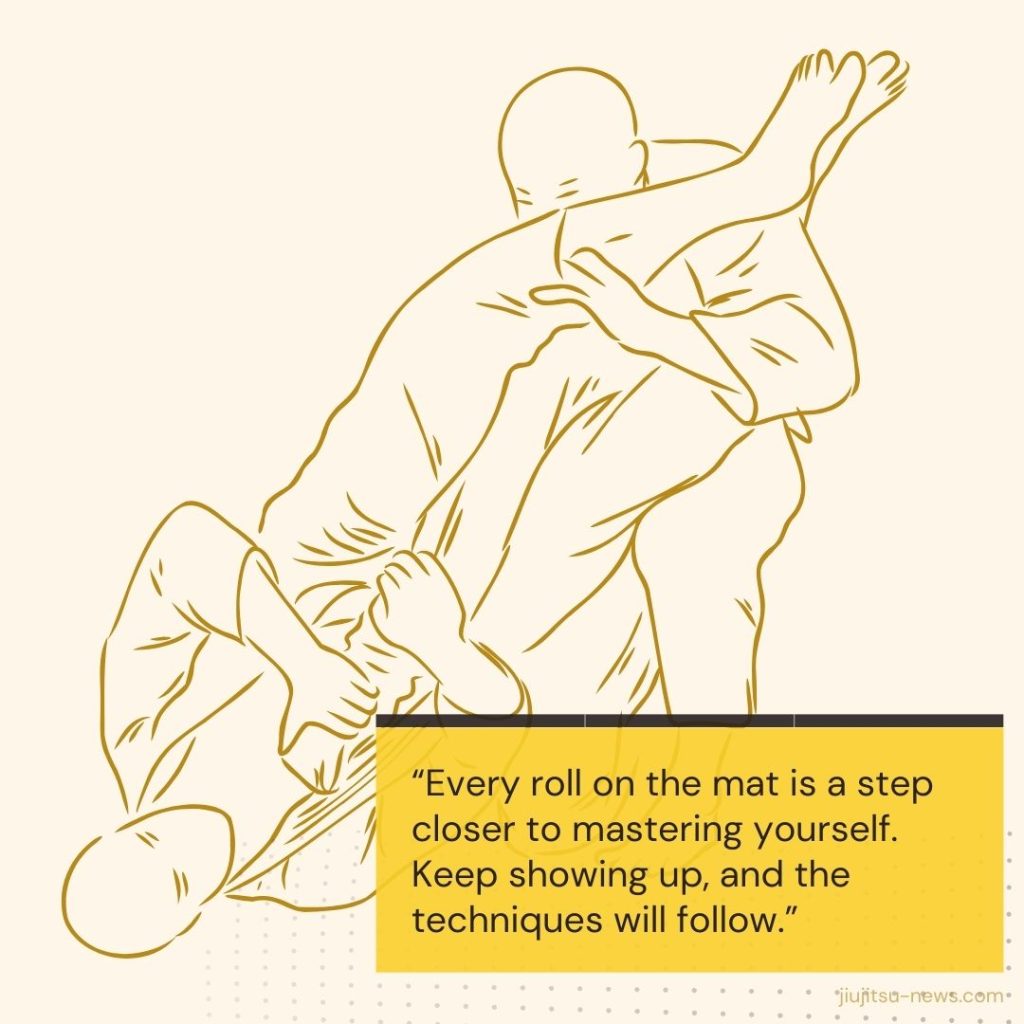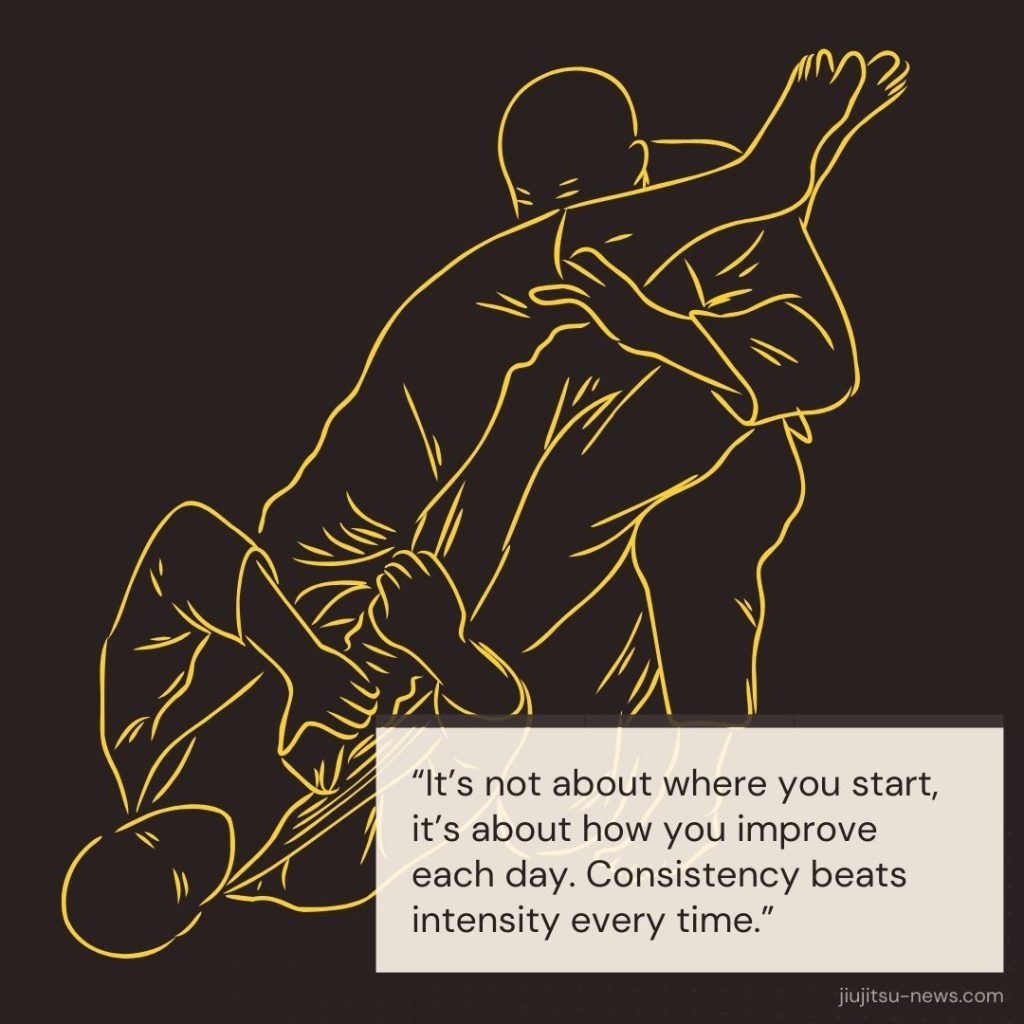Alright, so I’ve been training Brazilian Jiu-Jitsu for a couple of years now, and let me tell you, having the right weekly training schedule is everything if you want to get better fast.
BJJ is awesome, but it’s also tough—you gotta stay sharp with the techniques, and the only way to do that is to train consistently.
Let me guide you in creating an effective BJJ weekly training schedule for maximum progress.
What Does BJJ Training Really Look Like?

BJJ isn’t just about rolling around on the mats. It’s a full-body workout.
You’ll be learning techniques, drilling, and doing exercises to build your strength and cardio.
Depending on where you are in your journey, your training will look different.
Beginners focus on the basics like shrimping, technical stand-ups, and getting used to moving on the ground.
The goal of all these drills? To help you understand the art of grappling and how to control your opponent.
But trust me, it’s gonna feel awkward at first. Keep at it, though—it gets better!
BJJ Weekly Training Schedule Based on Fitness Level

Your BJJ training schedule will depend on your fitness level and goals.
Here’s a simple breakdown of how you could structure your week:
- Low & Basic Training: Days 1 and 2
- Intermediate Training: Days 3 and 4
- Advanced Training: Days 4 and 5
Day 1: Start Light
Trust me, I know the feeling—you want to go all out on day one and show off. But that’s not the best move.
If you go too hard right out of the gate, you’re gonna burn out fast.
So, start with some basic exercises to build strength for the rest of the week.
Here’s a quick list of what to focus on:
- Techniques:
- Technical standup
- Shrimping (moving on one hand, elbow, and shoulders)
- Shoulder rolls from different positions (closed guard, open guard, spider guard)
- Learn basic positions (knee on belly, guard pass, mount)
- Practice escapes and attacking positions
- Workouts:
- Push-ups, sit-ups, squats, sprawls
- Bent over rows, floor presses, pull-ups (2-3 sets of each with reps between 12-15)
Day 2: Time for Techniques & Tabata
By now, you’ve shaken off the rust and are ready to dig into some serious BJJ techniques. This is where the real fun begins.
Focus on learning the basics of submissions and takedowns, depending on your level.
Oh, and don’t forget the Tabata training. If you’ve never done it, Tabata is high-intensity interval training with barely any rest between exercises.
It’s killer, but it works.
- Example Tabata Workout:
- Bodyweight squats, push-ups, burpees, mountain climbers
- 4 minutes for each with short rest periods
Day 3: Solo Drilling
On the third day, it’s all about solo drilling. Drills are essential because they build muscle memory.
You’ve gotta repeat techniques over and over until they become second nature.
Solo drilling is great because you don’t rely on a partner to get your reps in.
- Techniques for Solo Drilling:
- Hip lifts, leg circles, sprawls
- Knee cuts, standing guard openings, Granby rolls
- Bridge and triangle drills
Day 4: Partner Drilling
Now that you’ve drilled solo, it’s time to put those techniques to the test with a partner.
This is where you learn how to escape, transition, and really get a feel for live sparring.
Partner drilling is super important because it gives you real feedback on your techniques.
Plus, you get to see how different people move, which helps you adapt your game.
- Drill with a partner:
- Practice escapes and attacking techniques
- Add in some bodyweight and weight training to up the intensity
Day 5: High-Intensity Training
Day five is your hardcore day. Strength training, circuit training, and maybe even another round of Tabata.
Circuit training is like regular strength training, but with less rest—think squats, push-ups, and chin-ups all in one round.
It’s tough, but it’ll get you in fighting shape fast.
If you’re serious about competing or want to take your BJJ to the next level, day five is your make-or-break day.
The more effort you put in, the better your results will be.
Find Your Purpose in BJJ
Before you dive into a five-day training week, ask yourself what your goals are.
Are you just here to learn some self-defense and have fun? Or are you trying to make BJJ your career? If it’s the latter, you need to commit to training at least five days a week.
But no matter what your goals are, the key is consistency. Show up, put in the work, and the progress will follow.
Takeaways
Training BJJ five times a week isn’t for everyone—it’s a grind, no doubt about it. But if you’re serious about leveling up and reaching those big goals, it’s doable.
The key is to pace yourself. Start slow, ramp up the intensity as you go, and stay consistent.
Trust me, if you stick with it, the results will blow your mind. Keep showing up, and you’ll see the progress.



